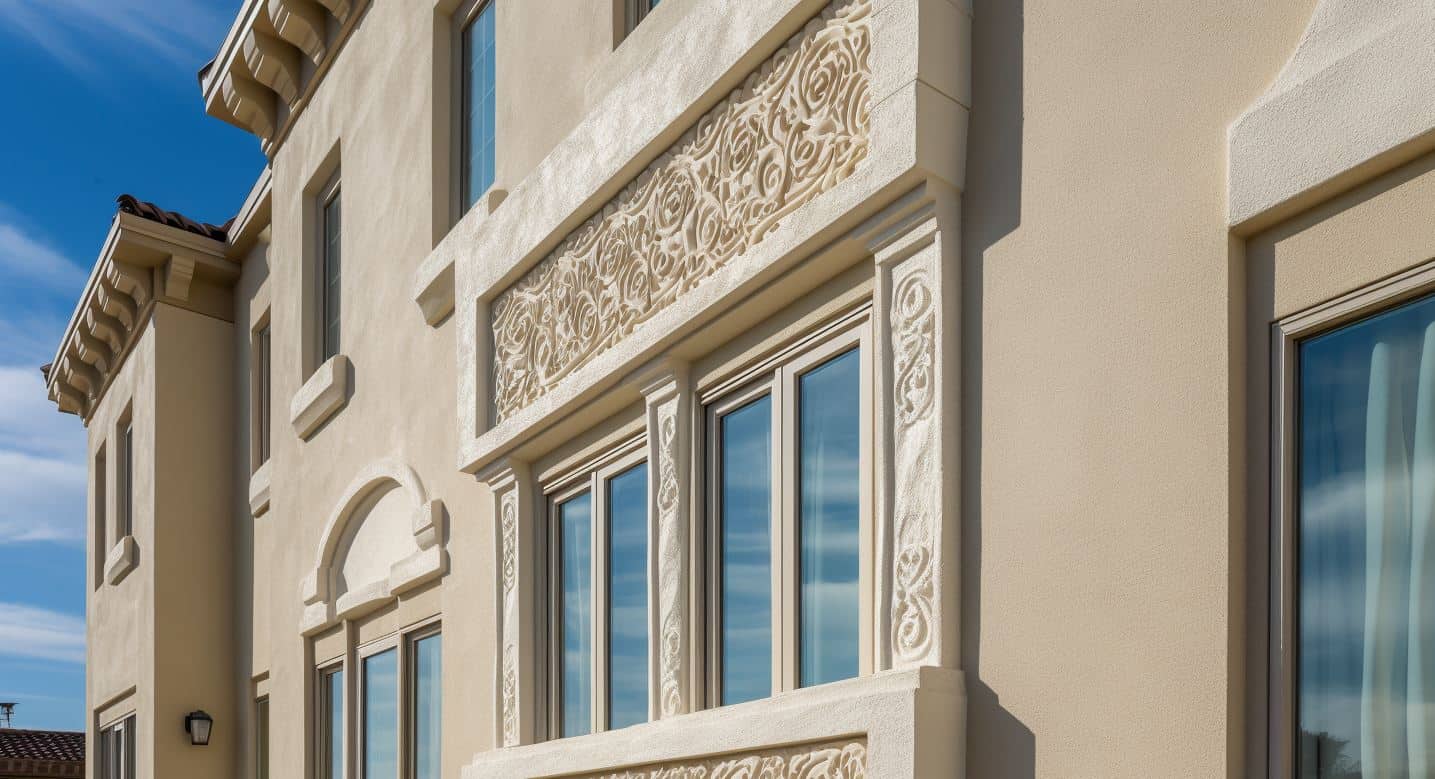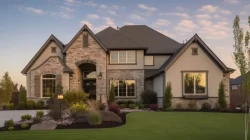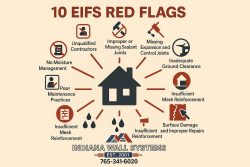Maximize Your Investment: The Ultimate Guide to Keeping Your EIFS in Top Condition for 2024 and Beyond
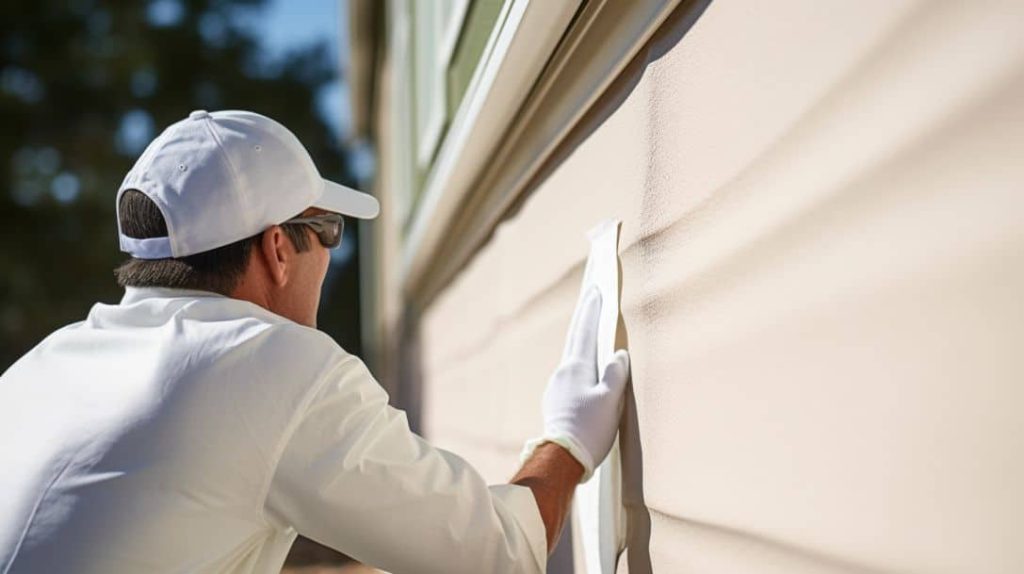
Are you concerned about maintaining your Exterior Insulation and Finish System (EIFS) as we approach the new year? Regular maintenance of EIFS, a popular cladding system known for its durability, is vital to ensure its longevity.
This article will provide you with a comprehensive checklist, guiding you through the do’s and don’ts of EIFS upkeep including inspections, cleaning techniques, painting tips and much more.
Read on to learn how proper care can extend your building’s lifespan well beyond 2024!
Key Takeaways
- Regular upkeep of Exterior Insulation and Finish Systems (EIFS) helps avoid complications like cracks or moisture issues.
- Painting your EIFS correctly is important. You’ll need good tools, the right paint, and proper techniques.
- Always inspect your building for damage first. Make sure to clean it well before you start painting.
- Repairing any damaged areas promptly can prevent larger problems later on. Use specific kits or call a professional if needed.
- Choose paints specially made for EIFS systems such as StoColor® Acryl Plus, Flatten Coatings or Specialty Aesthetic options from Sto’s iQ Technology range for best results.
- Planning yearly inspections moving forward is beneficial to maintain the integrity of your EIFS system over time.
The Trouble with EIFS
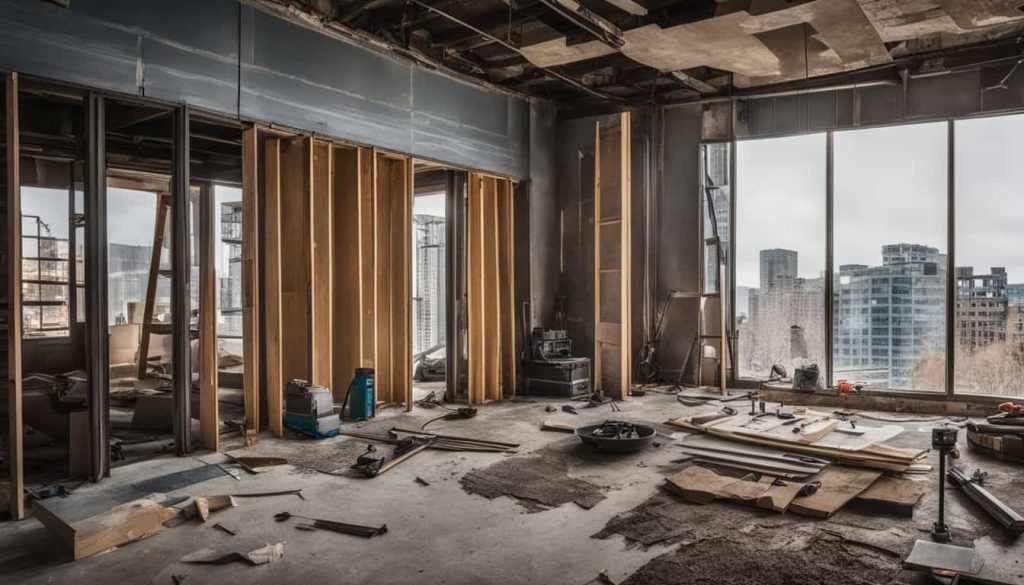
While EIFS (Exterior Insulation and Finish Systems) provide an economical and aesthetically pleasing option for property exteriors, they have faced issues in the past due to misunderstandings about proper installation and maintenance, underlining the need for a robust New Year’s maintenance checklist as we approach 2024.
Misunderstandings and past problems
Misunderstandings about EIFS systems have led to common issues in the past. Many people confuse EIFS with traditional stucco, causing confusion in maintenance processes. Some owners even neglect regular inspections, assuming that the system is resistant to wear and tear because it appears sturdy and durable.
This misconception has sparked numerous unexpected repair needs due to unchecked wear over time. Decades ago, improperly installed EIFS caused moisture-related problems which tainted their reputation despite advancements and improvements now making them a reliable cladding choice when correctly maintained.
Importance of proper maintenance
Proper maintenance of your EIFS is the cornerstone of its longevity and performance. Ensuring a regular schedule for diagnostics, cleaning and repairs can keep problems such as discoloration, cracks, and moisture issues at bay.
Adherence to annual inspections recommended by industry experts like Sto safeguards the integrity of your building envelope by identifying potential areas needing touch-ups or repair early on.
Further cementing the importance of scheduled maintenance is its impact on minimizing more extensive repairs down the line. Professional installation alone may not guarantee problem-free EIFS; it’s routine check-up and upkeep that keeps significant damages in check.
So from checking flashings to sealant removals, embarking on periodic maintenance should be part of every property owner’s calendar–your EIFS will thank you for it later!
The Do’s and Don’ts of EIFS Painting

A crucial aspect of EIFS maintenance is the painting process which will ensure its longevity. You must gather all necessary tools and inspect your building thoroughly prior to starting.
This step should involve cleaning and pressure washing the exterior, then repairing any damaged areas if needed before you begin applying paint. It’s essential to understand both what needs to be done and what should be avoided during this process to achieve an optimal result.
Gather the necessary tools and materials
Before diving into EIFS maintenance, one crucial step is to assemble all the tools and materials you’ll need. This preparation will streamline your efforts and ensure that you can work efficiently without unnecessary interruptions. Here’s a list of what you might need:
- A soft bristle brush for cleaning the surface
- Low-pressure power washer (Please note: high-pressure washing can damage the EIFS)
- Bucket and mild detergent for cleaning solution
- Sealant approved by Durex or Sto for minor crack repairs
- Scissors or utility knife for cutting away damaged sealant
- EIFS repair kit in case of substantial damage
- Gloves and protective eyewear for safety purposes
- Ladder or scaffold if required to reach higher areas of the building
- Specific EIFS paints like StoColor® Acryl Plus and Flat Coatings, Sto Elastomeric Coatings, or specialty aesthetic options from Sto’s iQ Technology range.
- Paintbrushes, rollers, or a paint sprayer depending on the size of your project.
Inspect the building
Begin your EIFS maintenance with a thorough building inspection. Look for any visible signs of damage or wear on the exterior finish, such as cracks, discoloration, or peeling paint.
Check for water leakage and moisture issues that might compromise your insulation system. Detailed attention to sealants and flashing is crucial to maintaining the watertight integrity of the building envelope.
For an in-depth analysis, consider using professional EIFS inspection equipment that examines underlying layers without causing damage. A comprehensive review helps identify potential problems early and forms an essential part of regular EFI maintenance plans.
Cleaning and pressure washing
Cleaning and pressure washing play a crucial role in maintaining the appearance of your EIFS. These steps help to remove dirt and any potential growth that can damage the building over time.
- Start by identifying areas that need attention: Look for spots where dirt has accumulated or where there is visible mold or mildew.
- Use low-pressure washing techniques: Aggressive power washing methods can cause damage to EIFS, so stick to gentle cleaning approaches.
- Choose a biodegradable detergent: This helps to break down grime without harming the environment.
- Rinse thoroughly after application: It’s essential to make sure no soap residue remains because it can interfere with the future painting process.
- Be patient during drying time: After cleaning, give your EIFS sufficient time to dry before applying paint or sealant solutions.
- Consult with professionals if unsure about any part of the process: If you’re not certain about how to properly clean and pressure wash your EIFS, professional services like Indiana Wall Systems are available for assistance.
Repairing any damaged areas
Damage to your EIFS can result in major issues down the line. Here’s how to effectively repair any damaged areas on your building’s exterior:
- Start by inspecting your EIFS for signs of damage. Look specifically for cracks, discoloration, or moisture issues as these are often indicators of underlying problems.
- If you find any cracks, invest in a crack repair kit designed specifically for EIFS systems like the one offered by Sto.
- Follow the instructions provided in the StoTherm® EIFS Reference Guide for proper sealant removal and surface preparation before starting repairs.
- In case of extensive damage, consider hiring a professional contractor with experience repairing EIFS systems to ensure the work is done correctly.
- Once all repairs are complete, apply an EIFS-specific paint over the repaired area to prevent further deterioration and protect against future damage.
- Make it a priority to maintain your newly repaired EIFS by scheduling yearly inspections moving forward.
Choosing the Right Paint for EIFS
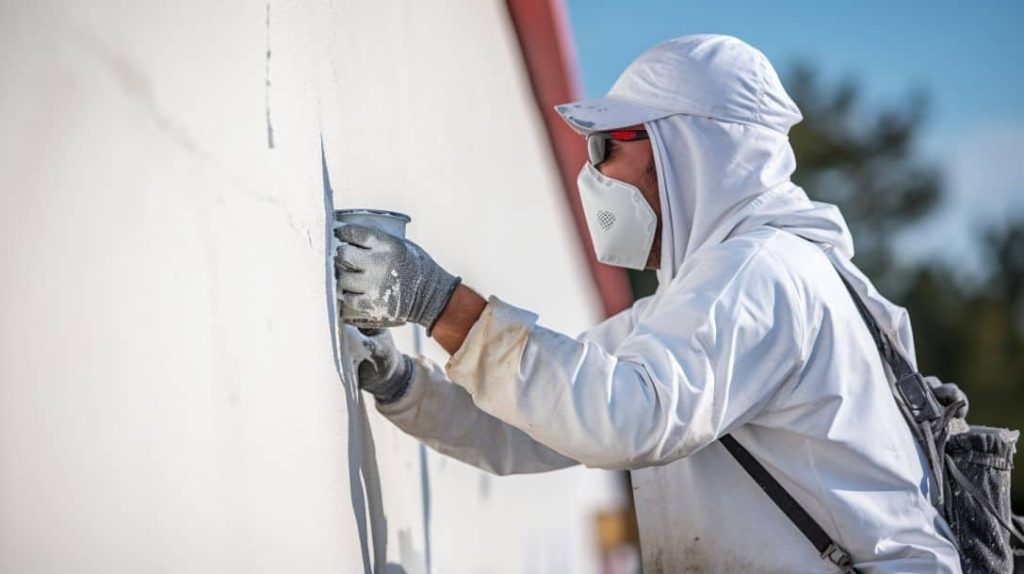
Choosing the right paint for your EIFS is crucial to ensure longevity and visual appeal; delve into various options such as StoColor® Acryl Plus, Flat Coatings, or Specialty Aesthetic paints.
Read on to explore more about why using specific EIFS paints can make a noticeable difference in your maintenance routine.
Use specific EIFS paints
Choosing the right paint for your EIFS plays a significant role in its durability. Specific paints, specially designed for EIFS, should be your go-to choice to ensure long-lasting protection and vibrancy.
These paints are formulated with properties that adhere well to the texture and composition of EIFS surfaces. Examples could include StoColor® Acryl Plus and Flat Coatings or Sto Elastomeric Coatings.
Specialty aesthetic options like Sto iQ Technology offer advanced solutions that combine visual appeal with functional benefits such as self-cleaning capabilities. Selecting these specific EIFS paints helps maintain the integrity and looks of your cladding system while providing a layer of defense against external weather conditions.
Options: StoColor® Acryl Plus and Flat Coatings, Sto Elastomeric Coatings, Sto iQ Technology, Specialty Aesthetic
Selecting the right paint for your EIFS is crucial in maintaining its durability and aesthetic appeal. Here are a few options to consider:
- StoColor® Acryl Plus and Flat Coatings: These coatings come highly recommended for their array of vibrant colors and exceptional resistance against cracking, fading, and chalking. They are especially beneficial in areas with harsh weather conditions.
- Sto Elastomeric Coatings: Known for their resilience, these coatings offer superior protection to your EIFS against harsh weather elements, including intense UV rays and heavy rainfall.
- Sto iQ Technology: This innovative technology ensures self-cleaning properties to help maintain the appearance of your EIFS over time. It works by mimicking the way plants use water droplets to clean their leaves.
- Specialty Aesthetic: These unique finishes give your building an appealing look that singles it out from others while still providing excellent protection.
Tips for Applying Paint to EIFS
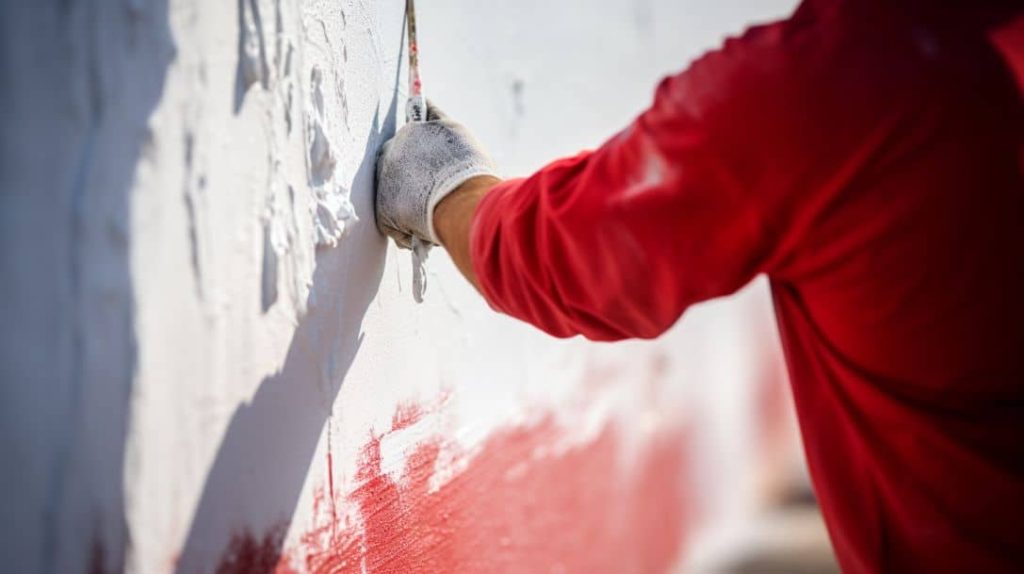
Learn strategic techniques for correctly applying paint to your EIFS, ensuring the longevity and attractive look of your building exterior. Dive into this section for practical tips that will make your paint application more successful.
Read on to discover more!
Proper application techniques
Adopting proper application techniques is crucial in ensuring the durability and effectiveness of EIFS. Here’s what you need to know:
- Always begin with a clean surface: It is important to remove any dust or debris that may be present on the EIFS before applying paint.
- Use long, even strokes: When painting, use long and even strokes to ensure an even distribution of paint across the surface.
- Don’t rush the process: Allow ample time for each coat of paint to fully dry before applying another.
- Use a quality roller or brush: The type of tool used can greatly affect the final result. Always opt for high-quality brushes or rollers designed specifically for EIFS applications.
- Check weather conditions: It is advisable to avoid painting when it’s overly humid, rainy, or too hot as these conditions can impact paint adhesion.
- Sealant application should be last: This should come after painting as sealants may interfere with paint adhesion.
- Ensure adequate ventilation during application: Good ventilation helps speed up drying times and reduces exposure to potentially harmful fumes from paints and sealants.
- Follow product instructions closely: Each product may have slightly different application methods so it’s best practice to adhere strictly to manufacturer instructions.
Additional tips for success
Ensuring the longevity and durability of your EIFS calls for more than just regular inspections. Here are some additional tips to help you succeed:
- Follow the manufacturer’s instructions for maintenance. Industry leaders like Sto provide comprehensive reference guides.
- Prioritize a professional inspection at least once a year to identify potential issues early, based on Sto’s recommendation.
- Include thorough checks of flashing and sealing in your regular maintenance activities to keep your building envelope watertight.
- Consider investing in EIFS inspection equipment. You can purchase it individually or in pre-packaged kits for about $3000.
- Pay attention to any discoloration or moisture issues on the EIFS as they can indicate serious underlying problems.
- Clean and repaint your EIFS depending on its condition; this action can boost its lifespan significantly.
- Always use certified professionals for any repair work needed, since proper installation reduces extensive future maintenance needs.
Proper Clean Up
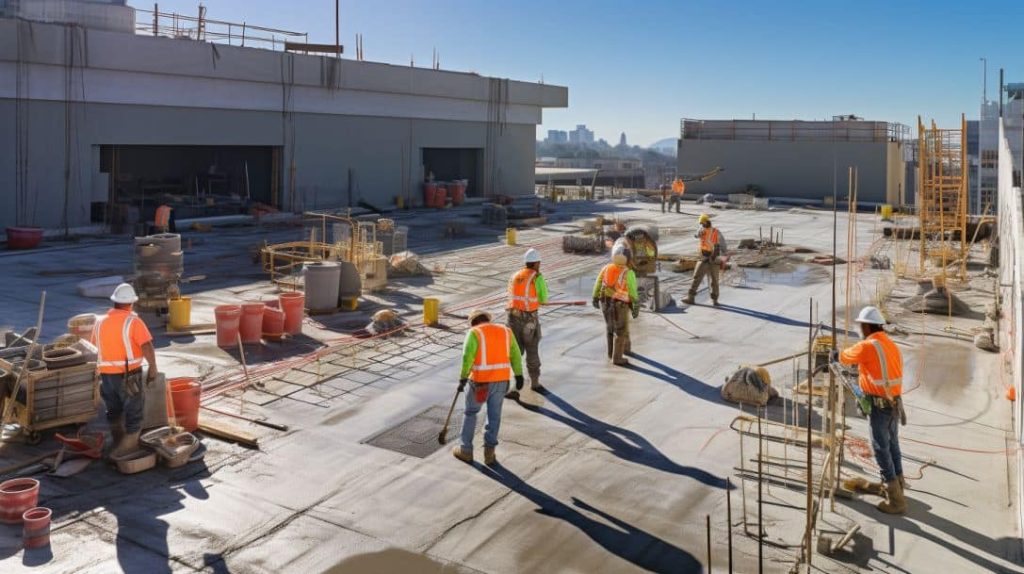
After completing your EIFS maintenance tasks, a thorough cleanup is essential. Proper disposal of used materials and site clean-up can help avoid potential problems down the line. Here’s a step-by-step guide to ensure you have covered all aspects.
- Collect any leftover paint or sealant and store them properly for future use.
- Dispose of debris from the cleaning process, such as worn-out brushes or scrapings from sealant removal.
- Safely discard damaged pieces of EIFS that were replaced in an appropriate waste facility.
- Clean the surrounding areas to ensure no paint splashes or debris are left on adjacent surfaces or the ground.
- Use a soft brush to remove any dust that may have settled on the EIFS during maintenance.
- If pressure washing is part of your maintenance process, be sure the area has dried completely before packing up the equipment.
- Keep your inspection equipment clean and store it properly for future inspections.
- Check around your property again to make sure there are no missed spots in need of clean-up.
- Update your records with details of this year’s EIFS maintenance, noting areas of concern for closer inspection next time.
Maintaining EIFS
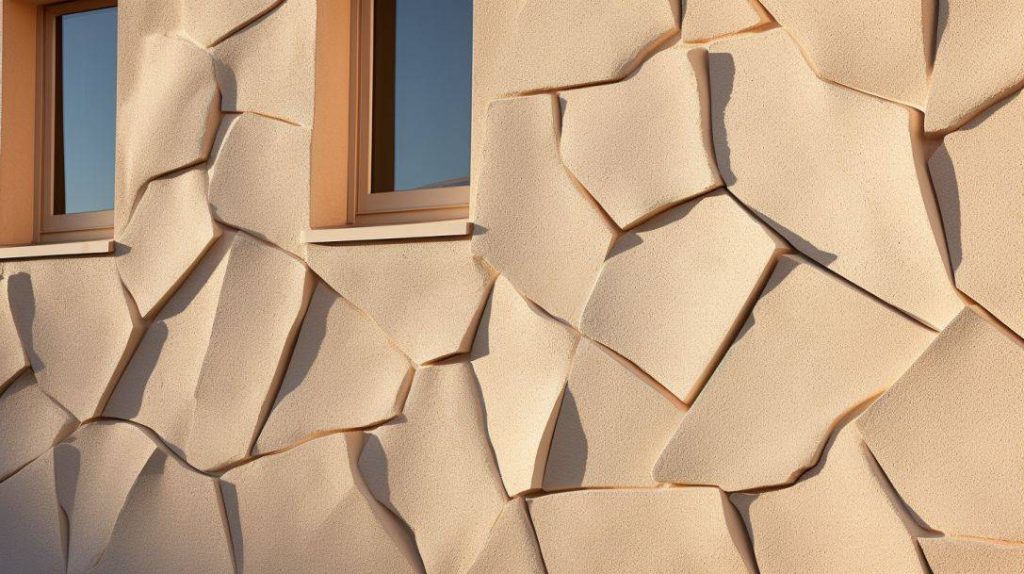
To ensure the longevity and aesthetic appeal of your EIFS, a commitment to routine maintenance is crucial; this encompasses using top-tier products such as Sto Products for upkeep tasks like cleaning, waterproofing, and preserving the finish, thereby guaranteeing optimal performance year-round.
Importance of regular maintenance
Regular maintenance is crucial for the longevity and performance of EIFS. It ensures your building’s envelope remains watertight, preventing potential water damage. Regular inspections can help identify issues such as cracks or discoloration before they escalate into larger, more expensive problems.
Companies like Sto recommend annual inspections to ensure the optimal condition of your EIFS. Cleanings are also vital because despite a high resistance to dirt pickup, EIFS can still accumulate grime over time which may lead to fading or staining if not addressed promptly.
Failure to maintain your EIFS could result in costly repairs down the line, emphasizing the importance of proper upkeep from day one post-installation. This approach not only maintains aesthetic appeal but also safeguards against future repair costs and enhances overall property value.
Using Sto Products for upkeep
It’s evident that integrating Sto products into your maintenance routine can significantly enhance the longevity of your EIFS system. Here’s a straightforward guide on how to use them effectively:
- Start by using the StoTherm® EIFS Reference Guide. It provides comprehensive, step-by-step instructions on repairing and maintaining your EIFS wall assemblies.
- Pay close attention to the sealant removal and surface preparation section in the guide. This is crucial to ensuring appropriate adhesion when you subsequently apply new sealant or paint.
- Inspect your cladding system annually as recommended by Sto. Look for cracks, discoloration, and moisture issues, and perform touch-ups as needed.
- Consider opting for specific EIFS paints like StoColor® Acryl Plus and Flat Coatings, Sto Elastomeric Coatings, or those from the Sto iQ Technology range. These are specially formulated for EIFS applications and will deliver optimal aesthetic and protective results.
- Employ professional services if you notice extensive damage during your inspections. Remember that while proper DIY maintenance can help preserve your system, experts have specialized knowledge that ensures effective repair.
- Lastly, invest in the equipment needed for these upkeep tasks – be it individual tools or pre-packaged kits available for around $3000.
EIFS Inspections
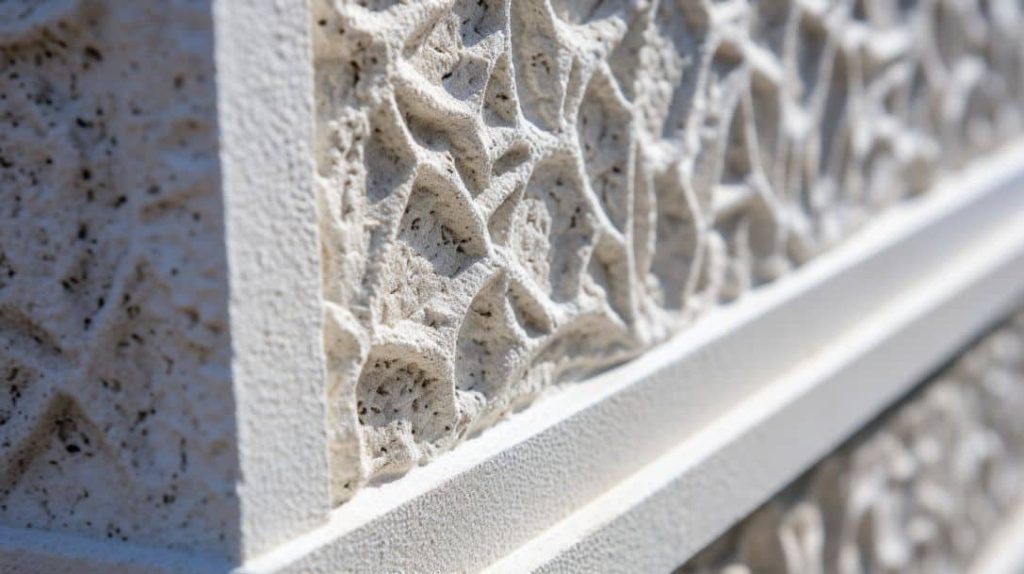
Stay ahead with regular EIFS inspections, a proactive step that can significantly limit liability for any future EIFS-related claims. This crucial investment ensures the longevity of your building’s exterior, tending to potential cracks and damages before escalating into expensive fixes.
Explore how partnering with reputable firms like Indiana Wall Systems can yield substantial benefits in terms of overall property value and structural integrity.
Benefits of getting an inspection
Getting an inspection for your EIFS has numerous benefits. It assists in identifying small issues before they escalate into larger, more costly problems. A professional inspector can spot cracks, discoloration, and moisture issues that often go unnoticed by the untrained eye.
Not only does this help maintain the building’s aesthetic appeal, but it also prevents potential water damage that could compromise its structural integrity. Regular inspections are a part of Sto’s recommended annual maintenance schedule for EIFS and are seen as critical to ensure their longevity and effectiveness.
Moreover, inspectors can invest in specialized equipment kits which can be offset by offering their services to other property owners as well hence creating another revenue stream while mitigating any potential future EIFS-related claims or liabilities due to poor maintenance practices.
Investment for inspectors
Investing in EIFS inspection equipment presents a profitable opportunity for inspectors. With kits available at around $3,000, it’s a smart investment that could lead to increased business and higher service charges.
Homeowners are increasingly recognizing the importance of regular thorough inspections of their EIFS systems to maintain them properly and ensure the building envelope remains watertight.
Hence, equipping oneself with proper tools can increase an inspector’s credibility and market value. Moreover, companies like Sto recommend annual checks; thus creating consistent demand for proficient inspectors in this field.
Inspectors can also limit liability for potential EIFS-related claims by performing detailed examinations using professional-grade tools and knowledge. Notably, proficiency in advanced EIFS maintenance tactics such as sealant removal or surface preparation greatly enhances an inspector’s portfolio.
Limiting liability for EIFS-related claims
Property owners can limit liability for EIFS-related claims by following a structured maintenance routine. Regular inspections ensure the building’s exterior functions and looks as it should, reducing the likelihood of structural damage.
Hire qualified EIFS professionals to conduct these checks and necessary repairs using proper tools and techniques. Fostering open communication with tenants about potential EIFS issues also goes a long way in preventing costly legal suits while keeping your property in good shape.
Furthermore, investing in an insurance policy specifically catering to EIFS properties may provide extra protection against any unforeseen damages or lawsuits over time.
How Indiana Wall Systems can help
Indiana Wall Systems stands as a beacon of assistance when it comes to EIFS inspections. Our team of specialists has extensive experience and knowledge in identifying potential issues related to cracks, discoloration, moisture problems, and the need for touch-ups.
We can help property owners mitigate any risks associated with EIFS cladding systems by providing professional inspection services.
Investing in Indiana Wall Systems is not merely about ensuring your structure’s functionality but protecting your investment long-term. With our proficient team on board, you receive stringent checks for aspects like flashing and sealing that go into keeping the building envelope watertight.
Our goal is to ensure that your yearly maintenance reduces future costs through early detection of potential damages.
Preparing Your Home for 2024
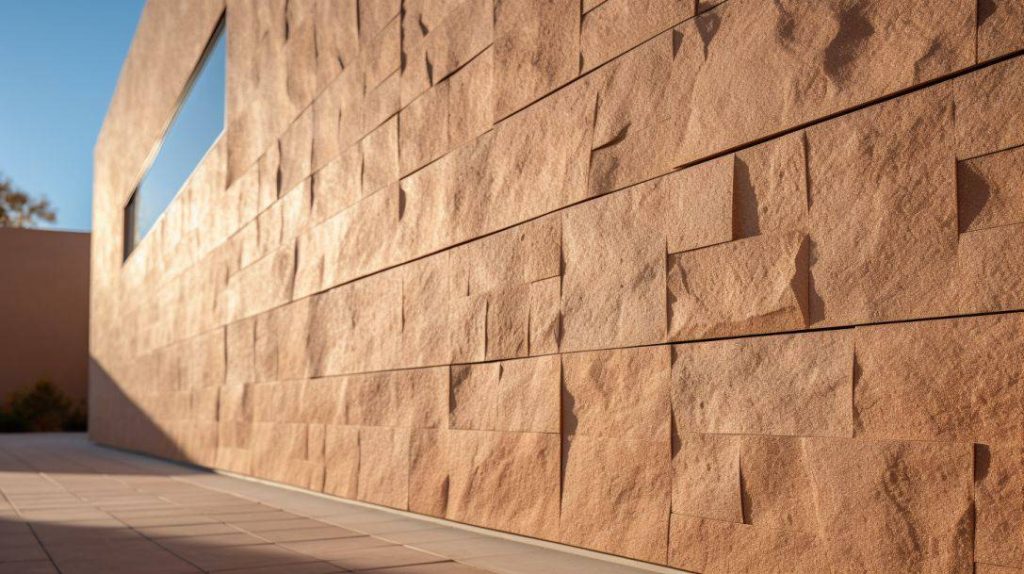
With changes expected in the 2024 NGBS, it’s essential to prioritize fire protection and prepare for potential risks. Make your EIFS compliant and ready for the coming year—Read on to learn how we can assist you with this crucial task.
Importance of fire protection
Fire protection ranks high in safeguarding your property from irreparable damage and ensuring the safety of its occupants. EIFS inherently possess excellent fire resistance characteristics due to their non-combustible core material.
However, additional measures like installing fire-resistant drywall or firebreaks add an extra layer of protection against potential fires. It’s crucial to comply with local fire codes and standards, as 2024 NGBS may introduce changes that require adjustments in current building designs or materials used.
Ignoring these precautions can lead to severe consequences such as significant property loss, substantial fines for code violations, or even endangerment of lives in worst-case scenarios.
Proactive steps towards robust fire safety significantly reduce these risks while ensuring a secure environment within your premises.
Changes in the 2024 NGBS
With the turn of the new year, there are upcoming changes to the 2024 National Green Building Standard (NGBS) that require close attention. As property owners, you will want to prepare and adjust accordingly.
- Expect stricter environmental regulations: The NGBS will demand more rigorous measures in place for energy conservation, water efficiency, and recycling.
- Anticipate green building product requirements: You may need to find alternative materials that comply with new standards for reducing carbon footprints.
- Pay attention to densification guidelines: The 2024 NGBS is likely to enforce rules around increased urban density – meaning you may need to strategically consider property renovations or expansions.
- Prepare for indoor environmental quality updates: Stricter guidelines on ventilation and moisture control systems are on the horizon which might necessitate upgrades in your current EIFS system.
- Understand changes in operational performance criteria: New operational performance metrics could impact how your building’s energy efficiency is measured and assessed.
- Compliance implies higher market value: Buildings that comply with NGBS often have a higher market value than those that don’t – so it’s worth investing time and resources now for future returns.
- Involve professional assistance: Due to these anticipated changes, you may wish to involve an EIFS professional from companies like Indiana Wall Systems, ensuring proper installation and maintenance following the updated standards.
Preparing for potential risks
Securing your property against potential risks is a key aspect of preparing your EIFS for 2024. Here are some ways to safeguard your investment:
- Schedule regular annual inspections: According to Sto, yearly checks can identify issues such as cracks, discoloration, and moisture problems. These early detections will allow you to address any problems promptly.
- Maintain your building envelope: This involves a thorough check of the flashing and sealing to ensure it remains watertight, thereby preventing water infiltration that can degrade your EIFS.
- Invest in inspection equipment: For those who wish to take matters into their own hands, you can purchase EIFS inspection equipment either individually or in pre-packaged kits.
- Address small issues promptly: Carry out timely repairs on tiny cracks or peeling paint on wood parts of the EIFS exterior to prevent these small problems from becoming significant structural concerns.
- Engage professionals for complex tasks: While routine maintenance can be done personally, more complex tasks like sealant removal and surface preparation should be handled by a professional using guidelines such as The StoTherm® EIFS Reference Guide.
- Prioritize cleanliness: Despite the high dirt resistance properties of Durex EIFS cladding systems, periodic cleanings are still crucial to maintaining its appearance and functionality.
- Fire protection measures: With changes coming up in the 2024 NGBS (National Green Building Standards), implementing fire protection measures may become increasingly important for property owners with EIFS installations.
- Stay informed about renovations: For instance, the University of Central Oklahoma plans to perform caulking, sealant work and other various projects related to Housing & Dining in 2024.
- Engage third-party inspection agencies when necessary: These bodies provide an impartial assessment of your building’s condition and offer recommendations for necessary repairs or replacements like roof or insulation replacement.
- Consider mold abatement if necessary: If your building is located in a high-humidity area, mold may be a concern. Mold abatement services can help maintain the health of your EIFS.
Conclusion
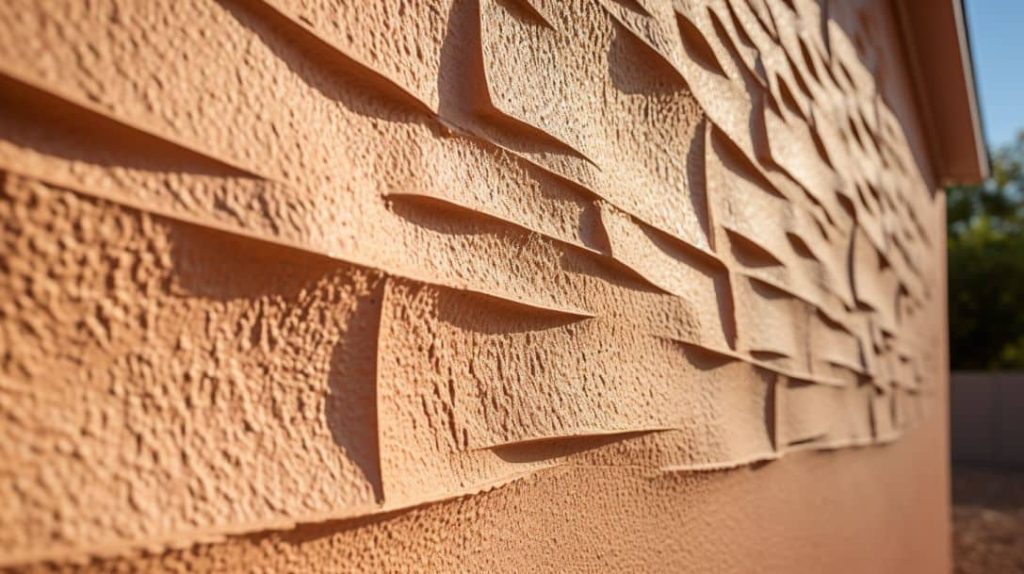
Concluding we emphasize the value and importance of diligent EIFS maintenance in extending the life-span and appearance of your property. Furthermore, this section will share contact information for Indiana Wall Systems to assist readers in professionally maintaining their EIFS-clad buildings.
Contact Indiana Wall Systems for EIFS installation and maintenance needs
Indiana Wall Systems stands ready to assist property owners with any issues related to EIFS installation and maintenance. Our team of experts is trained in the latest techniques for preserving and enhancing these systems.
With a keen eye for spotting problem areas, they provide a thorough examination that ensures your EIFS stays in top condition. So, don’t hesitate! Indiana Wall Systems is eager to help keep your property beautiful, safe, and energy-efficient.
Reach out today and let us show you how we can perfect your exterior insulation finish system.
Your EIFS maintenance journey does not have to be a solo one. Indiana Wall Systems is readily available to guide you every step of the way. You can access their services through several convenient platforms.
You can find a plethora of information about EIFS care and tips for longevity here. If you prefer speaking with an expert directly, phone lines are open during the usual business hours (Monday-Friday).
Simply dial (765) 341-6020 to consult with knowledgeable staff members. For those who wish for personalized advice or want an estimate for specific services, Indiana Wall Systems has an online form that captures your details and service needs accurately; this ensures they tailor solutions specifically suited to your property’s requirements and budget limitations.
FAQs
What are some key things I should inspect annually on my EIFS building?
When performing your yearly inspection of an EIFS building, be sure to check for any cracks, sealant deterioration, color fading, peeling paint, and indications of moisture intrusion. Pay close attention to sealants around windows, doors, joints, and penetrations. Checking the flashings and ensuring the building envelope remains watertight is also critical.
If I notice small cracks or damage on my EIFS wall, how should I repair them?
Minor EIFS damage like small cracks can often be repaired using sealant repair kits designed specifically for these cladding systems. Carefully follow manufacturer instructions for surface prep and application. For more extensive damage, it’s best to hire an EIFS professional to ensure proper repairs.
What types of paints work best for refreshing EIFS finishes?
Specialty acrylic paints and coatings made specifically for EIFS deliver the best performance and longevity. Examples are StoColor® Acryl Plus, Sto Elastomeric Coatings, or advanced aesthetic options like Sto iQ Technology paints. Avoid standard exterior paints not formulated for EIFS.
How often should I get my EIFS professionally inspected?
Industry experts like Sto recommend having your EIFS thoroughly inspected by a qualified professional at least once per year. Annual inspections help catch issues early before they escalate into costly repairs.
Why is proper cleaning important for EIFS walls?
While EIFS resists dirt pickup, regular cleaning is still needed to prevent the buildup of grime that can lead to staining, chalking, or fading over time. Use proper low-pressure washing and mild cleaners. Thorough cleaning prepares the surface for optimal paint adhesion too.

